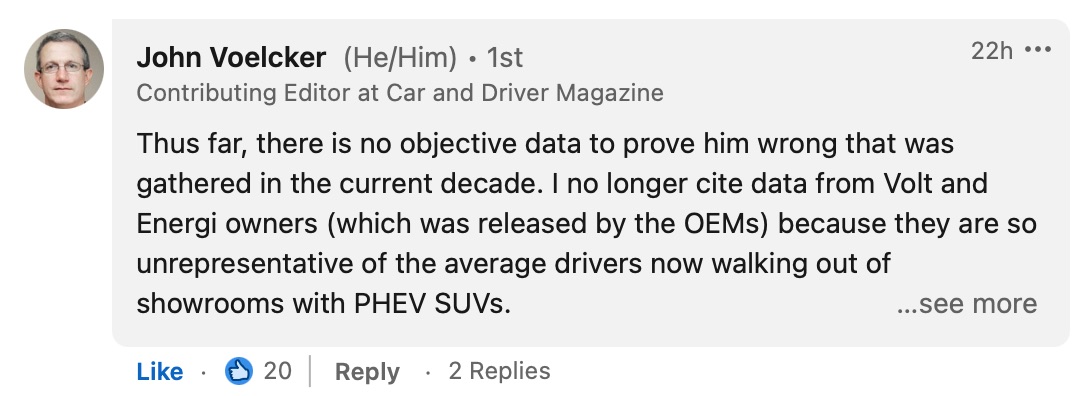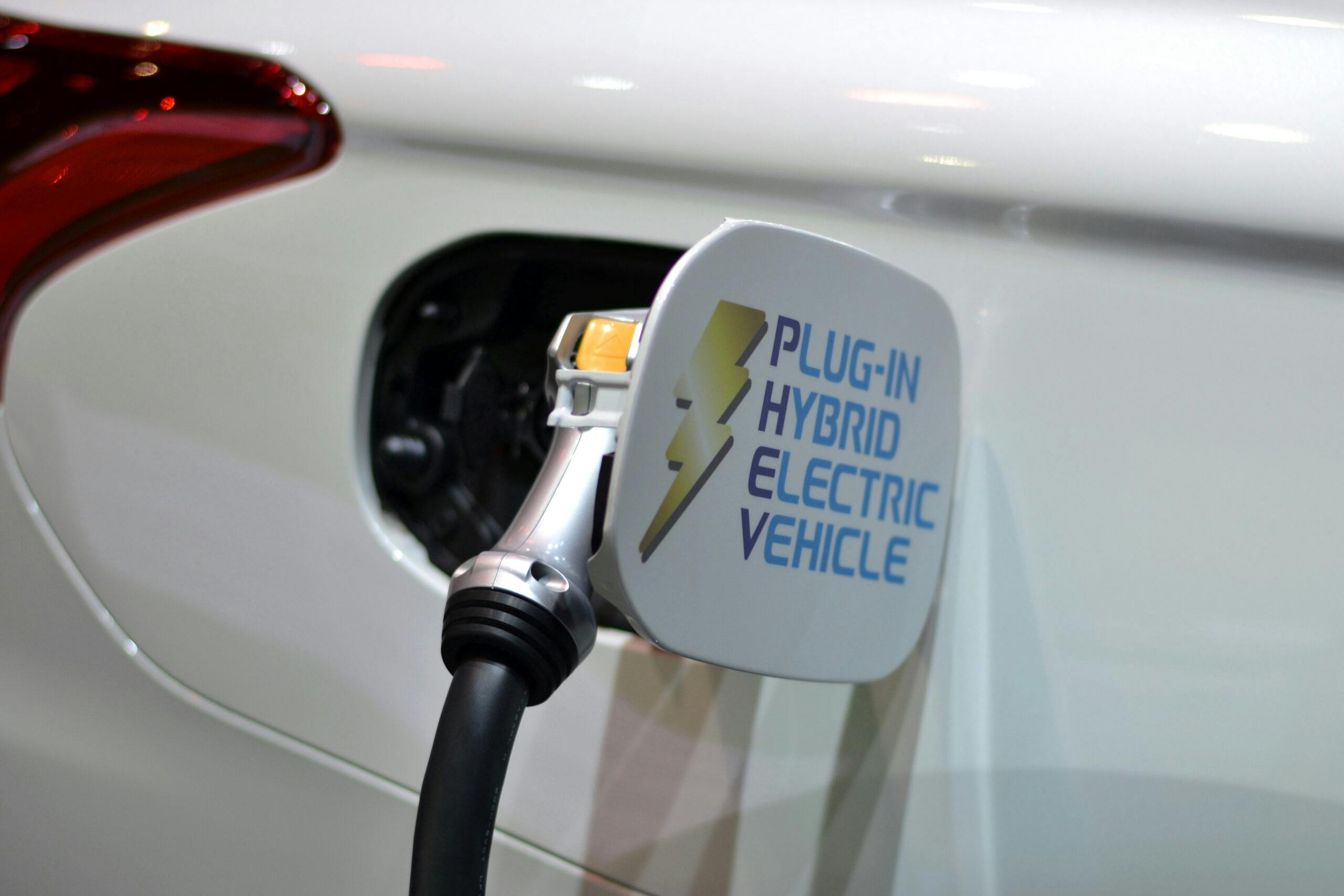Over the weekend a post on LinkedIn called out a colleague in the industry for saying that Americans don’t understand what PHEVs are and how to use them properly.
The author of the article is correct. We don’t know how to use PHEVs properly, and as long as we don’t use them properly they aren’t this miracle alternative to EV adoption that some would make you think.
For plug-in hybrid electric vehicles to take advantage of the extended EV range, they have to be plugged in. Simple, right? Well, that’s not the case out in the real world.
Colleague, friend, and one of the smartest people in this business John Voelcker commented on that very post:
“Thus far, there is no objective data to prove [her] wrong that was gathered in the current decade. I no longer cite data from Volt and Energi owners (which was released by the OEMs) because they are so unrepresentative of the average drivers now walking out of showrooms with PHEV SUVs.”

If the key to PHEV effectiveness is plugging in the car, then why won’t OEMs share how often their PHEVs are plugged in? We know they have the ability to do so — Voelcker mentioned data USED to be released — so why would they hide such information? How bad does it have to be that they’d rather keep that a secret?
Now I’m not going to sit here and say that Americans are too stupid to use PHEVs properly. There is a serious lack of eduction about alternative energy vehicles — even though we are working to remedy that — and the amount of misinformation out there from a pro-ICE or pro-rage lobby is enough to confuse just about anyone.
But the same issues preventing EV adoption are preventing meaningful PHEV use. That issue is the ability to plug in.
If you purchase a PHEV and don’t have a way to plug it in at home or at work, you’ll never see the added benefit of the bigger battery and all-electric range. In fact, you’re likely going to experience worse fuel economy than if you just purchased the conventional hybrid version of the same vehicle. Or, in the case of the Jeep Wrangler, worse fuel economy than the straight-up gasoline-powered version.

According to the government’s fuel economy website, a 2.0-liter Jeep Wrangler gets a combined 21 mpg, or uses 4.8 gallons of fuel for every 100 miles driven. If you have the plug-in hybrid 4xe, once it’s running without the electric-only range (i.e. just normal hybrid operation), the vehicles only gets 20 mpg and uses 5 gallons of fuel per 100 miles.
The added weight and complexity only pays off if you actually plug the vehicle in.
“Now what if I use the gasoline engine to charge the battery?”
Sure, you can set that before-mentioned Wrangler up to charge the battery, but you’re using extra fuel to charge the battery and defeating the purpose still.
While there are individuals who do, in fact, plug in their PHEVs, most do not. So why would someone buy a vehicle that they have no intention on using the way it was designed?
Cost.
We know that many people, when purchasing a new car, make a decision based on monthly payment. With high inflation, rising overall costs of living, and no end in sight, it’s even more important to count every penny. If you need to buy a new car, you’re likely looking even closer to how much you’ll pay.
Now PHEVs often carry a higher starting price than a gas-only equivalent, because lithium-ion isn’t cheap and there’s added mechanical complexity to a PHEV.
But, if you lease the vehicle the monthly payment is often less than that of a gasoline only version.
For example, if you take a 2024 Jeep Wrangler Rubicon it starts at $51,890 before destination and the advertised lease is $651 per month. That’s a lot of money.
If you spec the 4xe version, you’re looking at a starting MSRP of $61,990 before delivery or a lease payment of $404 per month (for 36 months here, while the other one was a 48-month lease). Which one are you going to pick?
Heck, you probably don’t even care if it is a PHEV or not, because you’re saving several hundred dollars a month. Also, you probably don’t care about the difference in fuel economy, either, because you are saving money.
It’s no wonder why the Jeep Wrangler is the bestselling PHEV in the country!
When plug-in hybrids are incentivized the same way as full BEVs are, the PHEVs will likely always be less money to lease (or buy) than a traditional hybrid. Or in the case of the Wrangler, cheaper than the regular gas-only version. And with dealers not incentivized to educate customers on what they are buying, they’ll never know.
Then you add in all the problems that BEV owners have, such as fighting with HOAs for charger installations, living in apartments where they can’t charge, inadequate public infrastructure, and everything else you read about it’s no wonder those PHEVs aren’t plugged in.
Plug-in hybrids only make sense when they’re used properly. And until we see data where that’s the case, they aren’t a viable alternative to a BEV or a traditional hybrid.
Post updates
Updated (04:48 PM EDT, 04/01/2024): Corrected grammar in the first paragraph.

